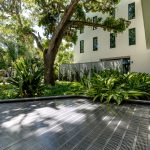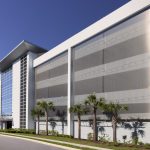In the world of construction, we have all become accustomed to delivering quickly. Speed is the mantra of most businesses. We often joke in our architectural studio that clients spend months to prepare contracts, then require working drawings in weeks. Speed may not be a new priority, but in 2023 it will certainly be the most critical priority.
In 2023, the pace of construction will become the most critical priority

It appears the pace of 2023 will be like nothing we have experienced. Compare it to the unfamiliar pace of 2020 and 2021 where everything seemed to be in slow motion. Compare the upcoming year with 2022 when we ramped up to a new normal and all experienced the fatigue of the normal pace. We begin 2023 at full pace.
Steel will likely be seen favorably in a market where availability will be the first parameter of consideration.
We have now experienced nearly three years of this world since the beginning of the pandemic. The constant is uncertainty. The construction industry seems to encounter previously unknown problems on a regular basis. There doesn’t seem to be a method to forecast or foresee, labor shortages, supply chain problems, interest rate hikes or an impending recession. The foil to uncertainty is speed. Design and construction must move faster than change occurs.
Trend prediction: Black will be the color of the year according to most architects. Just like last year, the year before, the year before that …
Speed to Design
Architects have long felt design and documentation rarely are allowed the optimal amount of time to accomplish. Decisions about a myriad of issues are made in this often-compressed phase; the most often crucial being budget impacts. There is no time to miss a budget in the economic environment of 2023. Project budgets have always been critical, but hitting the budget the first time is now more vital. A multi-week or multi-month redesign to meet a budget exposes projects to possible rate hikes, delays the cueing for goods and invites the unknowns. Architects will find themselves making conservative design decisions to protect budgets and feel the ethical pull of delivery versus design. Increased exposure to uncertainty will not be acceptable.
Speed to Deliver
Designs will be influenced by availability—the speed to the site. Steel will likely be seen favorably in a market where availability will be the first parameter of consideration. I see systems and components of systems being selected by the level finish they bring as they are delivered to the site. A prefinished panel system will not simply be seen as time savings and quality control; this simple choice will now be inflation protection!
Speed to Build
Construction duration will become an increasingly more important parameter of systems selection. As interest rates increase the amount of time that money is held without return must be shortened. There will be an increased value seen in PEMB structures. The accountability to the delivery of structure and envelope through fewer disparate parties will appeal to many owners. Accountability protects projects against uncertainty.
Speed of Change
In a world that moves capriciously, we will seek to influence what we are able to control. I believe the big issues in our world will likely be governed by instinct rather than debate because of the pace we will all be required to maintain. I sincerely hope topics like the fate of our planet won’t continue to be debated into inaction. Will we act for impact as we protect ourselves from temporal uncertainty? Our material choices as architects will likely reflect an innate understanding of our place in the history and health of the cosmos. The choices that impact us most favorably tomorrow and are available today are what will be in the specifications of 2023.
Brent Schipper, AIA, LEED AP, is a founding principal of ASK Studio, a Midwest-based architecture studio that is highly regarded as a design driven atelier. He is responsible for guidance of the studio’s design efforts and professional tenets while striving to maintain a Midwestern design dialect rooted in a landscape of functional sculptures and organic rhythms bounded by a cartesian grid. Schipper’s guidance has aided the studio in garnering over 60 design awards and over 80 project features in regional and national publications since its inception 15 years ago.






